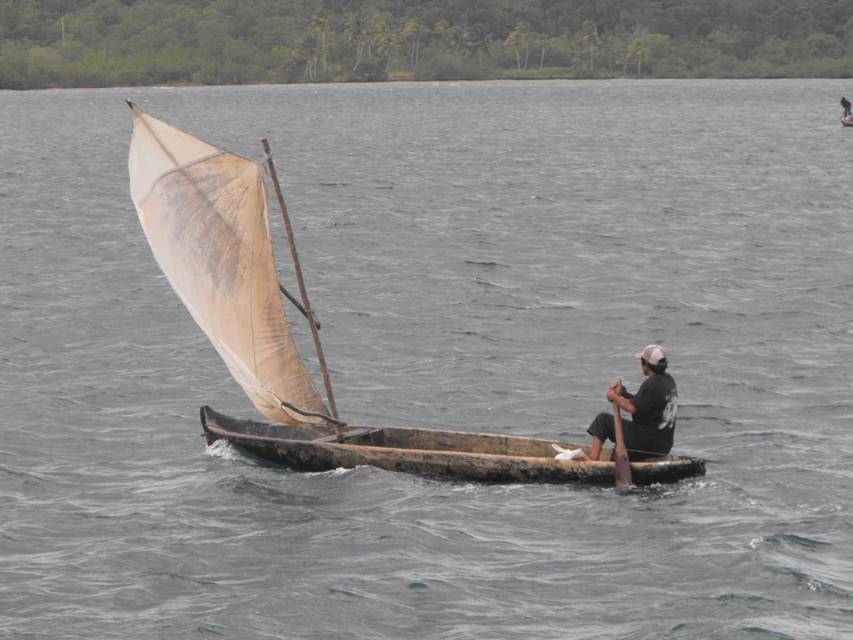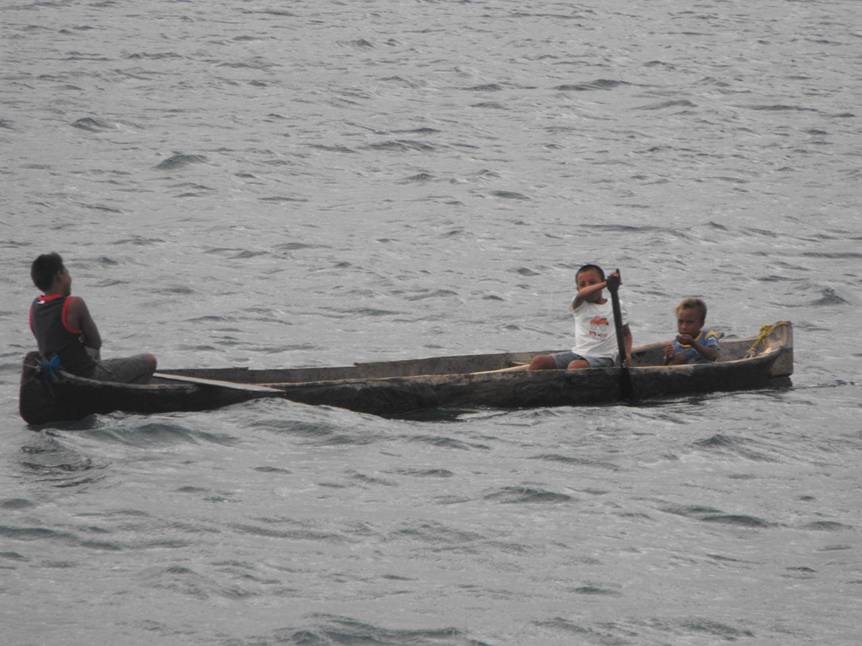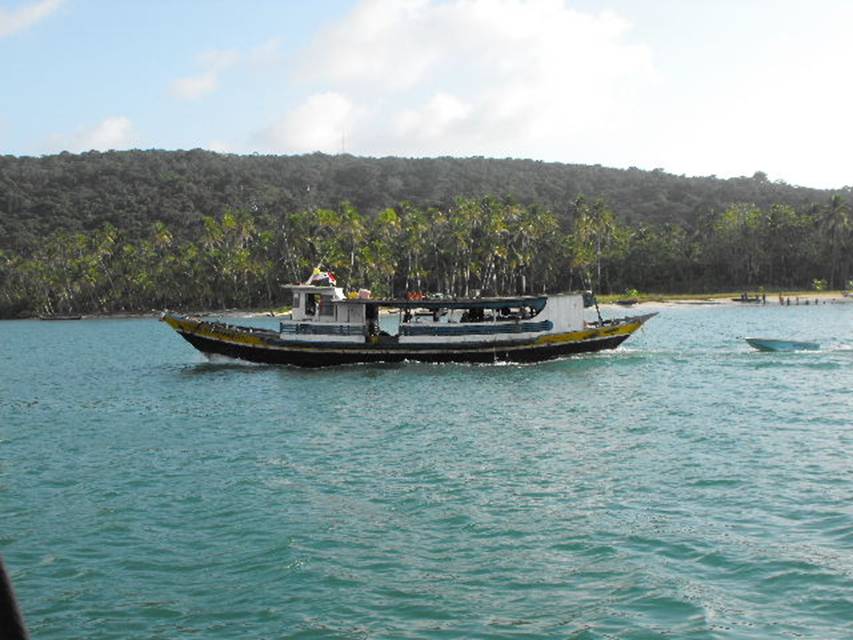San Blas Images

|
With such photogenic scenery and the diversity
of the Kuna way of life there is no shortage of great photos to choose from. However, the Kuna do not like to have their photos taken and
even when we snapped a group of little kids who asked to have the photo taken a village elder came and asked us to delete the shots from
the camera, therefore there are few if any photos of the Kuna men women or
children, which is a real shame as they are a happy, smiling group of
people, the women wearing their colourful molas, skirts and ankle jewellery, the little kids usually naked or just wearing shorts and the
men in shorts, T shirts and a baseball cap. The villages are usually fairly clean and orderly with huts
built within family compounds, usually on the windward side of the island to
get the benefit of the cooling trade winds but with bamboo fencing around to shield them from the
stronger gusts.
In some of the smaller islands space is tighter and some
houses are built over the sea on stilts as are the self cleaning pens for the
family pig. On some of the islands there are one or two concrete block
buildings, usually housing the school.
The Kuna men row across early each morning to the mainland
where they farm small plots of land with fruit and vegetables. They then row back around lunchtime with their dugout canoes
laden with produce or with the coconuts that they use as the basis of their economy, all coconut trees being owned by
individual Kuna’s. Most of these trees are located on the 350 plus
offshore islands and therefore Kunas are great sailors, either by paddling
their “ulas” , canoes cut by hand from the trees.
Or by jury rigging simple but effective sails, some like
this one in better condition than others.
With a special paddle used for as both a rudder and a keel
to reduce leeway
The kids start very young and there is none of the
ridiculous PC that stunts kids development and keeps them sat indoors staring
at computers and video games.
Although the boys and men of families will work together to
harvest their crops the men of the village also work together for the common
good As when fishing from the shore. The younger men also dive
for Lobster, King crabs and Octopus and the canoes come alongside to sell these
to cruisers.
Although the mainland is close to most islands and some
villages are located along the shore it is mostly jungle and road
communications are almost non existent. Therefore the Kuna rely on Colombian trading
boats that come up the 100 mile coastline and exchange foodstuffs,
petrol, oil and all manner of other goods in exchange for the coconuts, lobster, crabs,
etc. These rough cut vessels are usually heavily laden and many have been known
to sink in the rougher seas beyond the outer reefs.
Global warming is a serious threat to the Kuna way of life
with a number of islands having already disappeared beneath the waves and
villages abandoned as the sea level rises. Even the uninhabited
islands are affected as the higher salinity kills off the coconuts and
therefore their source of income with mangroves trees appearing along the shore as
nature adapts to these changes.
|








